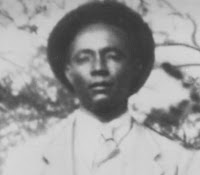The protests in Seattle surrounding the World Trade Organization (WTO)Ministerial Conference of 1999 was a domenstration that drew world wide attention to the social injustices surrounding free trade and globalization. This was a three day movement protesting global trading agencies like the International Monetary Fund, the World Bank, and the World Trade Organization. Protesters had issues with the rules and actions of these organizations because of the injustice surrounding their policies.

The stage was set for a controversial meeting between these organizations on November 30th (N30) in downtown Seattle. This meeting is where the different protest groups began to form demonestration plans months before N30. Nearly 100,000 protesters flooded the streets of downtown Seattle. These protesters included students, human rights groups, environmental groups, religious groups, union members, and many more activists.
Here is another blog which takes a look at the WTO riots-
Seattle is one of the leading exporters of all cities in America. In many ways it was fitting for the WTO to hold its meeting in the city. While Seattle has consistently supported free trade and the WTO it is also home to many outspoken activist groups. Giant corporations also call Seattle home including Microsoft, Boeing, Weyerhaeuser, and Starbucks. Many of these companies were targeted by protesters on N30.
Here is a video showing footage of the domenstration in Seattle.
http://bit.ly/pv0iq5

Some of the diverse groups responsible for organizing the Battle in Seattle were the Direct Action Network, the Rainforest Action Network, Art & Revolution, and the Ruckus Society. Other groups joined the protest including the AFL-CIO and Anarchists from Eugene AKA the Black Blocs. The planning of these groups was very detailed. They had stratagies to overtake intersections and create blockades against the police.
http://bit.ly/oCOX9g

The majority of protesters were non-violent, but there were some that were destroying property and attacking police.
Police arrested thousands and battled protesters with tactics like pepper spray, curfews, rubber bullets, and tear gas. The Seattle police department declared a state of emergency. This led to more arrests and violence.


Here is a website describing some of the chaos around the protests.
http://bit.ly/pXqLaO

Much of the national media coverage was focused on this violence and less about the issues behind the protests. The media was very limited by the massive corporations who controlled their agendas. Protesters were labled as anti-trade and left-wingers without any real cause.
Here is a chapter titled "Netwar In The Emerald City: WTO Protest Strategy and Tactics" out of Paul de Armond's report.
http://bit.ly/pppwtI

The success of the three day demenstration is still hard to determine. The WTO conferences were disrupted and Seattle Police Chief Norm Stamper resigned but how much did this disrupt the policies of the WTO, World Bank, and the International Monetary Fund? Did it improve free trade at all?

This movement did a great job of bringing awareness to the issues of free trade and it led to many other protests across America. I think this movement's full impact is still to be seen, because it may provide a stepping stone to a more progressive movement.

Earlier this month President Obama signed and approved a free trade agreement with South Korea, Columbia, and Panama. This agreement is monumental for all of those involved. Everyone is forced to adjust to the new trade agreement. Some industries like U.S. agriculture are going to export more and benefit. But how will that affect the agriculture industries in Columbia, South Korea, and Panama. Other industries like the U.S. textile industry are expected to suffer from the import of cheeper goods. I think this is relavent to the WTO protests in Seattle because president Obama required that there be 9 policies agreed to reguarding labor ritghts. The question is weather these requirements are actually going to improve work conditions and the injustices surrounding free trade around the world.


Read/Listen to the NPR report.
http://n.pr/qKk0LY
I was born (1990) and raised in Seattle but the issues behind these protests were never really explained to me. I obvisouly knew about the protests, but I was too young to understand the issues behind the smoke and mirrors of the media. One thing I do remember is the violence between police and protesters, including the excessive use of pepper spray. Local news reports covered this extensively, but not injustices that led to this protest.


This movement was significant in many ways. It was one of the largest protests since the Vietnam War. It was also one of the first protests to take advantage of the internet. This development was the first step towards some of what we are seeing today with the #OccupyWallStreet movement. I think the Battle in Seattle could be a stepping stone towards social change.


